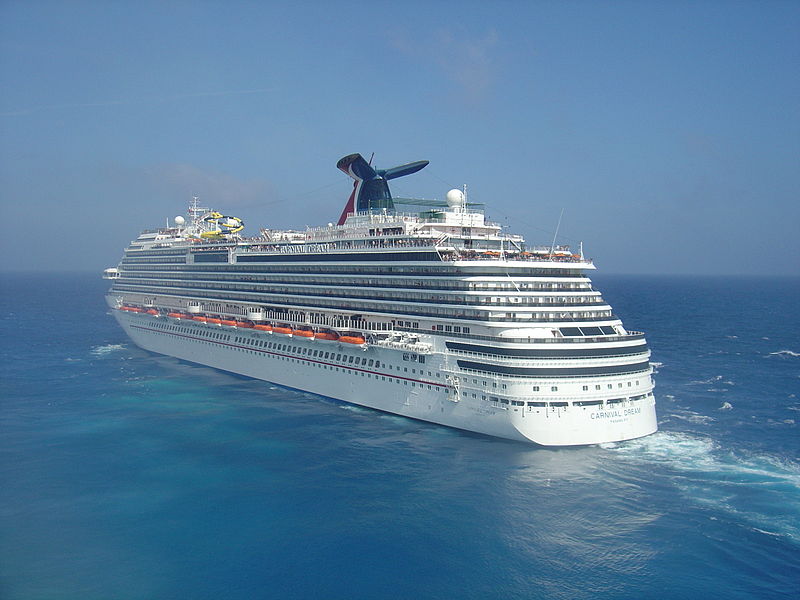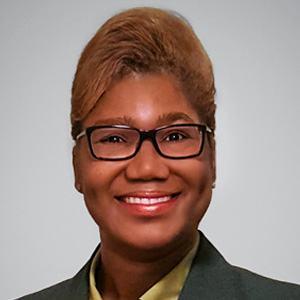On March 9, 2013, my husband and I sailed on the Carnival Dream as we celebrated our honeymoon. We were treated to the usual cruise luxuries—hot meals, unlimited soft drinks and beautiful ocean views. Carnival treats its customers well, and we were confident that the company had learned from the Carnival Triumph engine room fire. Unfortunately, our high hopes were dashed as we found ourselves stuck in port with more than 5,000 passengers and crew five days into our voyage.
It has not been a good year for Carnival. Still reeling from the Costa Concordia tragedy last January, Carnival’s latest mishaps aboard the Triumph and Dream have led to an increasingly souring reputation. But Carnival’s biggest missteps have little to do with a few incompetent captains, failing generators and overflowing toilets. While these mistakes launched the PR crisis the company now faces, it’s the mishandling of information, broken promises and lack of a clear plan that have caused the worst dents in the cruise line’s reputation.
1. Don’t Make Promises that Cannot Be Kept
On March 13, when engineers discovered a problem with the backup generators, the captain made the wise decision to remain in port rather than risk a voyage with only one operable generator. It was the right thing to do. The cruise director immediately took to the ship-wide announcement system and informed guests of the trouble. Unfortunately, while the director’s news appeased passengers who worried about the missed departure time, this was also when Carnival’s leadership made their first mistake.
The captain and cruise director assured us that we would be leaving that night, and our arrival time in Orlando would be unaffected. Two hours later, when we still had not left port, the same promise was made. And in the last message of that night, as many guests were settling into bed, staff assured us that everything would be resolved by morning.
So, when we woke the next morning to see the beautiful St. Martin coastline, we were less than thrilled.
While Carnival was right in keeping guests informed, customer confidence in the company started to fail the moment the promised deadlines passed. It is important to update those people affected and to reveal steps your organization is taking to correct the issue, but if your spokespeople cannot speak with 100% certainty, committing to a specific timeline is a mistake.
2. Assume Your Customers Are Connected
At approximately 2:30 AM – ship time – someone on the boat contacted the media. The story was riveting: Toilets were overflowing, elevators were broken and another Carnival ship was stuck! As quickly as Carnival had provided information to guests on the boat, these guests beat them to the media. In the wee hours of the morning, an email to CNN revealed titillating details that were not entirely accurate. By the next morning, Carnival had tweeted links to an official statement, but the first story had already caught media attention.
You must assume that your customers have smartphones, and they are taking photos, sharing tweets and posting to their Facebook timelines. Even in international waters with limited access to the Internet, someone shared the news – I’m only surprised it took until two in the morning.
3. Integrate Crisis Communications
Carnival’s early efforts to keep guests informed soon gave way to silence as additional deadlines passed. More than 24 hours later, none of us knew anything substantive with regard to the ship’s problems and our revised itinerary. The cruise director had informed guests that she was on the phone with Carnival’s Miami headquarters, but as of 11:30 that night, no one knew how they were getting home, when their flights were leaving or what to do with their luggage. People were confused and angry even as Carnival promised refunds and discounts. We didn’t want gifts – we wanted to know how and when we were getting home.
But Carnival didn’t have the answer.
In an industry where expected variables include mechanical disruption, human error and acts-of-God, a crisis communications plan should be integrated into the operations manual. As the engineers worked on the malfunctioning generator, the cruise director, or another spokesperson for the brand, should have been able to turn to a crisis communications plan that included clear steps and solutions. Carnival’s inability to provide information to onboard guests in this situation is testament to the absence of an integrated plan—they were winging it.
This could have been a story about how Carnival overcame its PR woes and retained its customers, but it’s not. The cruise line didn’t just fail the cruise guests who sailed with the Dream or Triumph. Because of the company’s poor response in the wake of mechanical failures, its present and future customers no longer trust the brand, and it’s going to take years for Carnival to rebuild that trust.

 As design director at Cookerly, Tim serves as the creative lead in the development of branding campaigns, print collateral and digital media for clients across a broad range of industries, including consumer, professional services, healthcare and technology.
As design director at Cookerly, Tim serves as the creative lead in the development of branding campaigns, print collateral and digital media for clients across a broad range of industries, including consumer, professional services, healthcare and technology. As senior vice president at Cookerly, Mike Rieman specializes in building and maintaining relationships with the media and has an excellent track record of landing significant placements in print and broadcast media including USA Today, Wall Street Journal, Bloomberg and Money Magazine.
As senior vice president at Cookerly, Mike Rieman specializes in building and maintaining relationships with the media and has an excellent track record of landing significant placements in print and broadcast media including USA Today, Wall Street Journal, Bloomberg and Money Magazine.

 As vice president of Cookerly, Sheryl Sellaway uses her extensive corporate communications background to lead consumer PR efforts, deliver strategy for marketing programs and share expertise about community initiatives.
As vice president of Cookerly, Sheryl Sellaway uses her extensive corporate communications background to lead consumer PR efforts, deliver strategy for marketing programs and share expertise about community initiatives.
 As a senior vice president at Cookerly, Matt helps organizations protect and advance their reputations and bottom lines through strategic communications programs. Using creativity, planning and flawless execution, he works with a team to deliver compelling public relations campaigns that produce results and support clients’ business objectives.
As a senior vice president at Cookerly, Matt helps organizations protect and advance their reputations and bottom lines through strategic communications programs. Using creativity, planning and flawless execution, he works with a team to deliver compelling public relations campaigns that produce results and support clients’ business objectives.
Very interesting case evaluation, specially by a professional that was inside the Carnival. Lack of correct information is one of the most common errors in cases
Thank you for your comment, Mario. There is no doubt in my mind that the team on-board had to made some very difficult decisions about what they could and should tell the people on board, and stronger crisis response framework could have better guided their decisions.
Holly,
You’re analysis of Carnival Cruise’s PR nightmare aboard the Dream is spot on! Only deep discounts and other perks will help the company generate new customers in the short term. Long term, Carnival will need to make decisive changes in high-level management and develop a fool-proof,crisis communications plan to regain the public’s trust and rebuild the brand! I’m sure the entire industry suffered because of Carnival’s missteps. I don’t think customers see distinctions among the many cruise providers and likely lump them all in one box!
My only fear is that Carnival will read your initials post, like what you said and offer you a senior-level communication job! I would totally understand if you said, “Thanks, but no thanks!” But if you did take the job and succeeded in cleaning up this mess, you’d have a masterful case study in crisis communication and reputation enhancement, and an unlimited number of career opportunities in front of you!
Chuck Sifuentes
I agree with your analysis. But, as a former aircraft-carrier electrician, I’m curious about some missing details in your story. You don’t indicate when you finally got underway and how late you got back after your scheduled return. All I can tell from your story is that you may have been delayed in returning by what reads like a matter of 24 or fewer hours.
Any late return is unacceptable, of course, but in my experience a 24-hour delay (and I realize I’m assuming it was only that short) is not unheard of when attempting to procure and install replacement parts, especially while in a foreign port of call.
The cruise director undoubtedly was getting her information from the captain, and the captain was getting it from the chief engineer. But the engineer’s information was probably coming either from the engineering support at Carnival or directly from a supplier. In either case, the arrival of the replacement equipment would have been subject to many logistical variables that might have resulted in a continually changing flow of timetable updates.
The first timetable you heard was probably based on an initial estimate that the faulty generator could be repaired with ship’s resources alone. Subsequent revised departure estimates would have resulted from discovering that parts would have to be flown in. In that scenario, the engineer can only report to the captain what she is told by the supplier. I know from experience that civilian suppliers are almost always over-optimistic when they estimate deliveries. The final timetable you heard was probably based on the engineer’s estimate for installing the replacement equipment. In such situations, technicians often fail to factor in the time necessary for integrating nonstandard parts and testing them for full functionality.
Rather than simply announcing what time the ship would be departing–and then having to announce multiple changes to that timetable–the *captain* should have announced that, to ensure safety, the ship was staying in port because the generator needed replacement parts. The captain should have added that the parts’ *estimated* arrival would be at a certain date & time and that, after their arrival, she would provide the passengers with an updated estimate of not only when the ship could get under way, but when it would return.
At whatever point the delay became longer than 24 hours, Carnival should have offered transportation to the closest airport for free flights back to the ship’s departure point. If no flights could be booked by Carnival that day, it should have hired helicopters to fly passengers back directly.
As to why Carnival doesn’t bother to do more in these situations to save its brand reputation…
According to Wikipedia, Carnival’s parent company owns more than 100 ships and the combined brands of Carnival Corporation controlled a 49.2% share of the total worldwide cruise market in 2011.
Carnival’s parent company owns and operates at least 10 different cruise line brands, and most of its cruise passengers on Holland America, Princess and Seabourn (all operating out of the USA) are, I’m sure, unaware that they are traveling on a Carnival-owned and operated ship.
That much market share buys a lot of insulation for any one brand.
Stephen, thank you for your insight. Excellent points.
To clarify, the ship did not leave Saint Martin until the following week. Ultimately, our vacation was cut short by two days, and my husband and I were flown from Saint Martin to Miami, as you suggested.